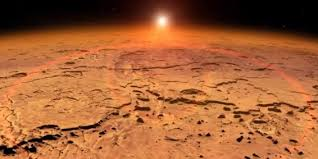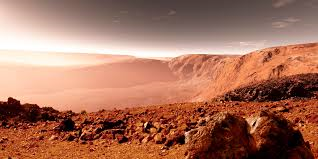It looks like you're using an Ad Blocker.
Please white-list or disable AboveTopSecret.com in your ad-blocking tool.
Thank you.
Some features of ATS will be disabled while you continue to use an ad-blocker.
share:
originally posted by: Blue Shift
originally posted by: jordan77
I've long been of this opinion. There's no limit to the possibilities, but we insist on putting limits on life.
We don't do it. Nature does. Too much heat. Too much cold. Too much radiation. A few degrees either side of a very narrow margin.
Yeah, it might not limit some forms of life we might consider "exotic" like crystal matrices or vapor creatures or energy beings, but for the most part we look at life as a structure that moves with a reason and reproduces using material from its local environment. Cold halts activity and heat destroys structure. Show me life that thrives in boiling magma or in the dark cold of interstellar space.
I've found it helpful when responding to similar post to point out that without nature's limits matter itself would not exist. The same limits which rule out things like being who live on the surface of stars munching on moon cakes are the same limits which allow atoms, molecules, dust, planets, us to be.
Nature's limits are actually empowering when viewed that way.
Anything -is- possible within the laws of physics but those laws are very broad and we haven't even begun to draft laws of biology, we just have physical/chemical limits placed on it based on things like molecules flying apart, breaking down or not being able to form in the first place.
edit on 28-4-2015 by JadeStar because: (no reason given)
a reply to: BigBrotherDarkness
I am always stunned when they see things, how do they see through all of the planets and stuff between us and the black hole in the center of the galaxy for example.
So many details about something 490 light-years (151 pc) from the Earth. Yet the pictures on the ground from Mars are blurry.
I am always stunned when they see things, how do they see through all of the planets and stuff between us and the black hole in the center of the galaxy for example.
So many details about something 490 light-years (151 pc) from the Earth. Yet the pictures on the ground from Mars are blurry.
originally posted by: Char-Lee
a reply to: BigBrotherDarkness
I am always stunned when they see things, how do they see through all of the planets and stuff between us and the black hole in the center of the galaxy for example.
The planets in this system haven't been "seen" the way we see the other planets in our own system for example. We don't know what the planet actually looks like, what it's atmosphere consists of, if it actually has water or not. All that is known so fat is an approximation of its size and the fact that it lies on the outer edge of the habitable zone for an M-dwarf star.
All the information gleaned regarding kepler 186f has been detected by Transit Photometry.
in other words, there has been no direct observation of this planet or the other 4 known to reside within this system, it is all inferred from observing how much the host star dims as the individual planets cross in front of the star and only observable for planets whose orbits happen to be perfectly aligned from the astronomers' vantage point.
this photometric method can determine the radius of a planet. If a planet crosses (transits) in front of its parent star's disk, then the observed visual brightness of the star drops a small amount. The amount the star dims depends on the relative sizes of the star and the planet.
So many details about something 490 light-years (151 pc) from the Earth. Yet the pictures on the ground from Mars are blurry.
these don't seem so blurry to me-




here's a cool article on the find- www.space.com...
and this tells a little about the kepler space telescope that searches for exoplanets- www.space.com...
edit on 28-4-2015 by peter vlar because: (no reason given)
a reply to: peter vlar
Yes I know that is what I am saying...
The Mars pictures taken with cameras a few feet from objects are indeed blurry.
Yes I know that is what I am saying...
The Mars pictures taken with cameras a few feet from objects are indeed blurry.
originally posted by: crazyewok
originally posted by: Astyanax
a reply to: crazyewok
Do you feel it is improbable that these chemicals will be found on Kepler 186F?
They are common, at any rate, all over the Solar system. Here is a list of compounds that the Rosetta probe has detected in outgassing from Comet 67P/C-G, now that it's getting nearer the Sun and starting to emit volatiles:
Water
Carbon monoxide
Carbon dioxide
Ammonia
Methane
Methanol
Formaldehyde
Hydrogen sulphide
Hydrogen cyanide
Sulphur dioxide
Carbon disulphide
Fact is we don't know.
We only know about our solar system. And even then we are still far off from knowing everything.
At the end of the day we need a better telescope that can do spectrometry.
More data is needed , its as simple as that.
That's my opinion as a biologist. I don't know. I want more information.
^^^^ 100% THIS!
That said, it hasn't stopped NASA from a bit of fanciful speculation:

Check out the Kepler-186 f poster here.
new topics
-
Former NYT Reporter Attacks Scientists For Misleading Him Over COVID Lab-Leak Theory
Education and Media: 1 hours ago -
Why did Phizer team with nanobot maker
Medical Issues & Conspiracies: 1 hours ago -
Pro Hamas protesters at Columbia claim hit with chemical spray
World War Three: 1 hours ago -
Elites disapearing
Political Conspiracies: 3 hours ago -
A Personal Cigar UFO/UAP Video footage I have held onto and will release it here and now.
Aliens and UFOs: 3 hours ago -
Go Woke, Go Broke--Forbes Confirms Disney Has Lost Money On Star Wars
Movies: 5 hours ago -
Freddie Mercury
Paranormal Studies: 6 hours ago -
Nirvana - Immigrant Song
Music: 10 hours ago -
British TV Presenter Refuses To Use Guest's Preferred Pronouns
Education and Media: 11 hours ago
top topics
-
British TV Presenter Refuses To Use Guest's Preferred Pronouns
Education and Media: 11 hours ago, 16 flags -
Go Woke, Go Broke--Forbes Confirms Disney Has Lost Money On Star Wars
Movies: 5 hours ago, 12 flags -
Pro Hamas protesters at Columbia claim hit with chemical spray
World War Three: 1 hours ago, 9 flags -
Trump To Hold Dinner with President of Poland At Trump Tower Tonight
2024 Elections: 14 hours ago, 8 flags -
Tucker Carlson interviews Christian pastor from Bethlehem.
Middle East Issues: 13 hours ago, 7 flags -
Elites disapearing
Political Conspiracies: 3 hours ago, 7 flags -
A family from Kansas with six children moved to the Moscow region
Other Current Events: 17 hours ago, 6 flags -
Freddie Mercury
Paranormal Studies: 6 hours ago, 6 flags -
A Personal Cigar UFO/UAP Video footage I have held onto and will release it here and now.
Aliens and UFOs: 3 hours ago, 5 flags -
Nirvana - Immigrant Song
Music: 10 hours ago, 4 flags
